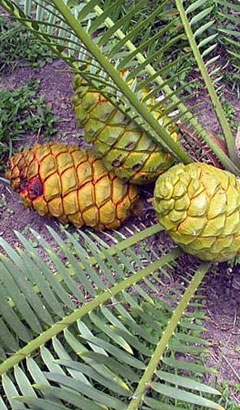Gymnosperms
What are gymnosperms?

Gymnosperms are primitive seed plants. They have a long evolutionary history. The earliest gymnosperms appeared in the Paleozoic and became the dominant plants worldwide during the Mesozoic and Caenozoic periods (see Geological Time).
Many species of existing gymnosperms emerged in the Tertiary Period, then went through the Glacial period and survived and multiplied till now. The total number of living gymnosperms of the world is about 850 species, belonging to 79 genera of 15 families.
The life cycle of gymnosperms depicts a dominant sporophyte (diploid) and reduced gametophytes (haploid) with the female gametophytes retained on the sporophyte (see Plant Evolution). The male and female sex organs may be formed in compact structures on short stem axes called cones or strobili or on specialized leaves or in flowers.
In gymnosperms, the sexes are separate, so both male and female sporangia are produced either on the same plant (monoecism) or on separate plants (dioecism). Meiosis occurs both in the pollen (male) and in the ovulate (female) cones or strobili or sporangia on specialized leaves that are formed on the sporophyte.